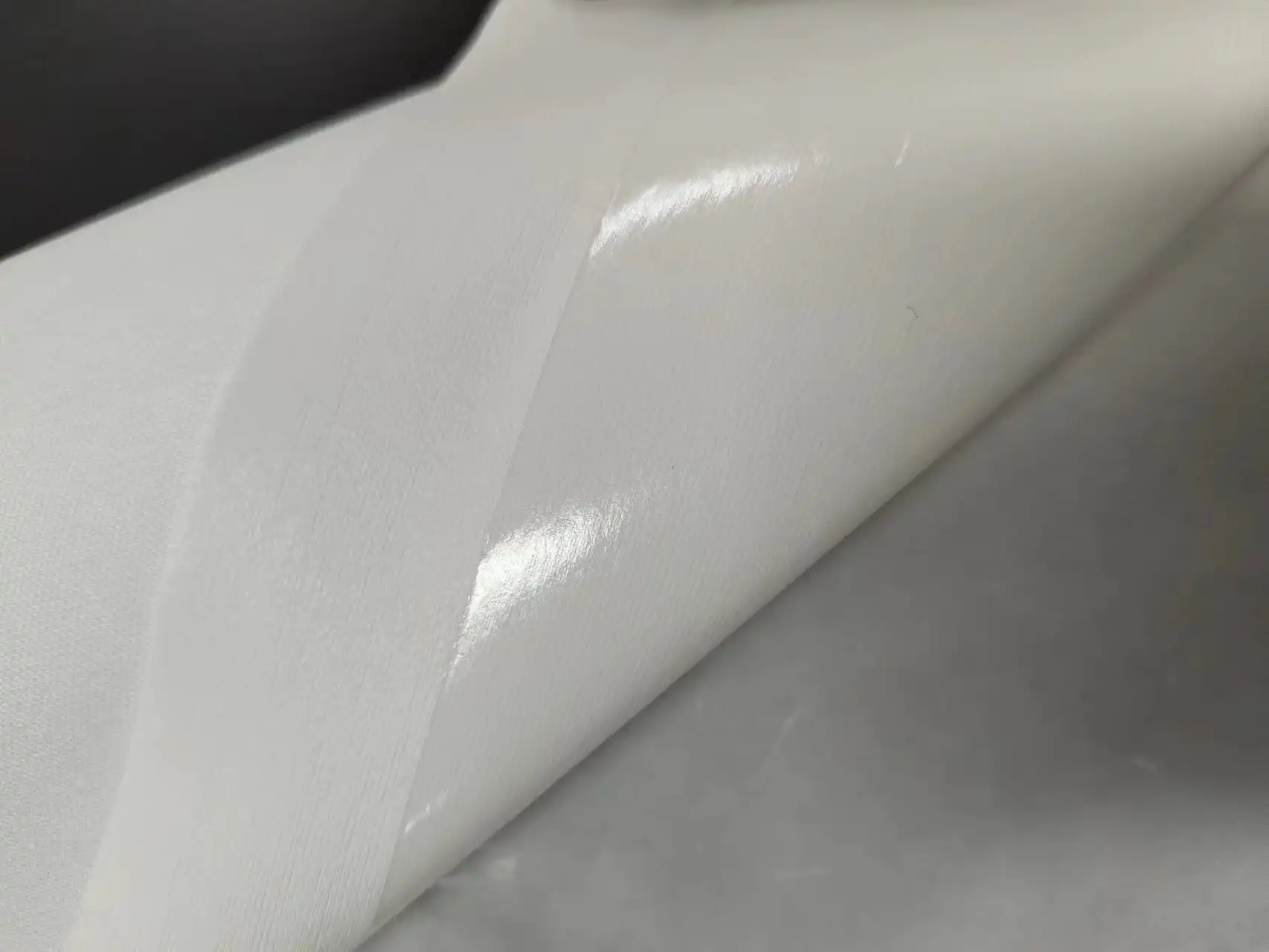Introduction to anti-sublimation hot melt adhesive powder film
Release time: 2025-09-26
Table of Contents
If you are in the clothing or luggage business, have you ever encountered these nightmarish after-sales issues?
A carefully crafted white jacket, after being washed a few times, has the printed colors mysteriously “creeping” onto the lining?
Customer complaints: Under dark fabric, there are unexpected white adhesive film marks, making it look cheap and rough? Don’t simply attribute the cause to poor dye quality or inadequate craftsmanship! The real culprit is likely the overlooked critical property of heat-sealable adhesive film—sublimation resistance—and the incorrect selection of black and white adhesive films.
Today, we’ll thoroughly explain how to use sublimation-resistant adhesive film to maintain quality standards and eliminate the embarrassment of color bleeding and adhesive film transparency in your products.
1、What is anti-sublimation
Sublimation
Sublimation refers to the phenomenon where certain dyes (especially polyester disperse dyes) directly transition from a solid state to a gaseous state at high temperatures.
Migration
Migration refers to the penetration of these gaseous dyes into adjacent materials.
Anti-sublimation
The core function of anti-sublimation film/powder is to form a barrier that prevents these gaseous dyes from penetrating the film and contaminating the light-colored fabric on the other side (e.g., red dye from the pattern on the back of a white T-shirt penetrating to the front).
2、White anti-sublimation adhesive film/adhesive powder Uses
Light-colored or transparent fabric bonding
The primary function of light-colored or transparent fabric bonding is to bond two pieces of light-colored fabric (such as white mesh fabric or white lining fabric) together. Using white hot adhesive film prevents the adhesive film color from showing through, which could affect the appearance and color of the fabric. If black adhesive film is used to bond two pieces of white fabric, the result will appear grayish or blackish.
As a light-colored base
In certain composite processes, white adhesive film can be used as a base color to ensure that the colors of the upper layer materials appear more vivid and accurate, without being affected by the colors of the lower layers.
Anti-sublimation performance
The white adhesive film/powder itself contains anti-sublimation additives that effectively block dye gases from penetrating. However, the white pigment may also reflect and scatter light to a certain extent.
3、Black anti-sublimation adhesive film/adhesive powder
Bonding with Dark Fabrics: When bonding dark fabrics (such as black or navy jackets and sportswear), using black adhesive film ensures seamless concealment. The film’s color blends perfectly, eliminating any visible contrast and delivering a cleaner, more polished appearance.
Black is generally considered to offer the most effective anti-sublimation properties. This is because carbon black pigment particles possess exceptional coverage and absorption/blocking capabilities, enabling them to more effectively “capture” and “block” migrating dye gas molecules—acting as a thicker barrier.
Important Note: Never use under light-colored fabrics, as the black will show through noticeably.
4、Selection and Usage Guide
Primary Principle: Select the adhesive film color based on the fabric color.
Light-colored/white fabrics → Choose white anti-sublimation filmDark-colored/black fabrics → Choose black anti-sublimation filmNeutral colors (gray, army green, etc.) → Decide based on desired visual effect. To prevent show-through, select film matching the fabric’s color.
Confirm film/powder type
Standard hot melt adhesive films (even black ones) do not offer professional anti-sublimation properties. When purchasing, clearly specify the intended use to the supplier and request anti-sublimation variants (e.g., anti-sublimation PA adhesive film, anti-sublimation TPU adhesive film, etc.).
Note Material
For garments requiring frequent washing, high elasticity, or outdoor use (such as sportswear and jackets), anti-sublimation TPU laminates are the optimal choice. They not only resist sublimation but also offer excellent elasticity, wash resistance, hydrolysis resistance, and low-temperature flex resistance.PA (polyamide) laminates also feature anti-sublimation variants with strong dry-cleaning resistance, though their elasticity typically falls short of TPU.
Rigorous testing conditions
Anti-sublimation adhesive films typically require higher temperatures, greater pressure, and longer processing times to fully fuse and form a dense barrier. Always conduct small-scale tests first!Testing includes:Bond strength: Peel to determine if the fabric is damaged (pass) or the adhesive easily separates (fail).Anti-sublimation test: Place the laminated sample in an oven (e.g., 135°C-150°C) for 2-3 minutes, or apply high-temperature pressure with an iron for a period. Observe whether dye migration occurs on the light-colored surface.
Choose Anhui Tomis, you will get:
Professional technical support: to provide you with the most suitable choice of adhesive film and embossing program.
High-quality products: strictly control the production process to ensure that each meter of film is of excellent quality.
Perfect after-sales service: to solve your worries, so that you can use at ease.
Contact us now for more information about adhesive film!


